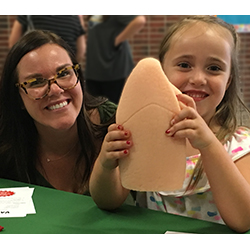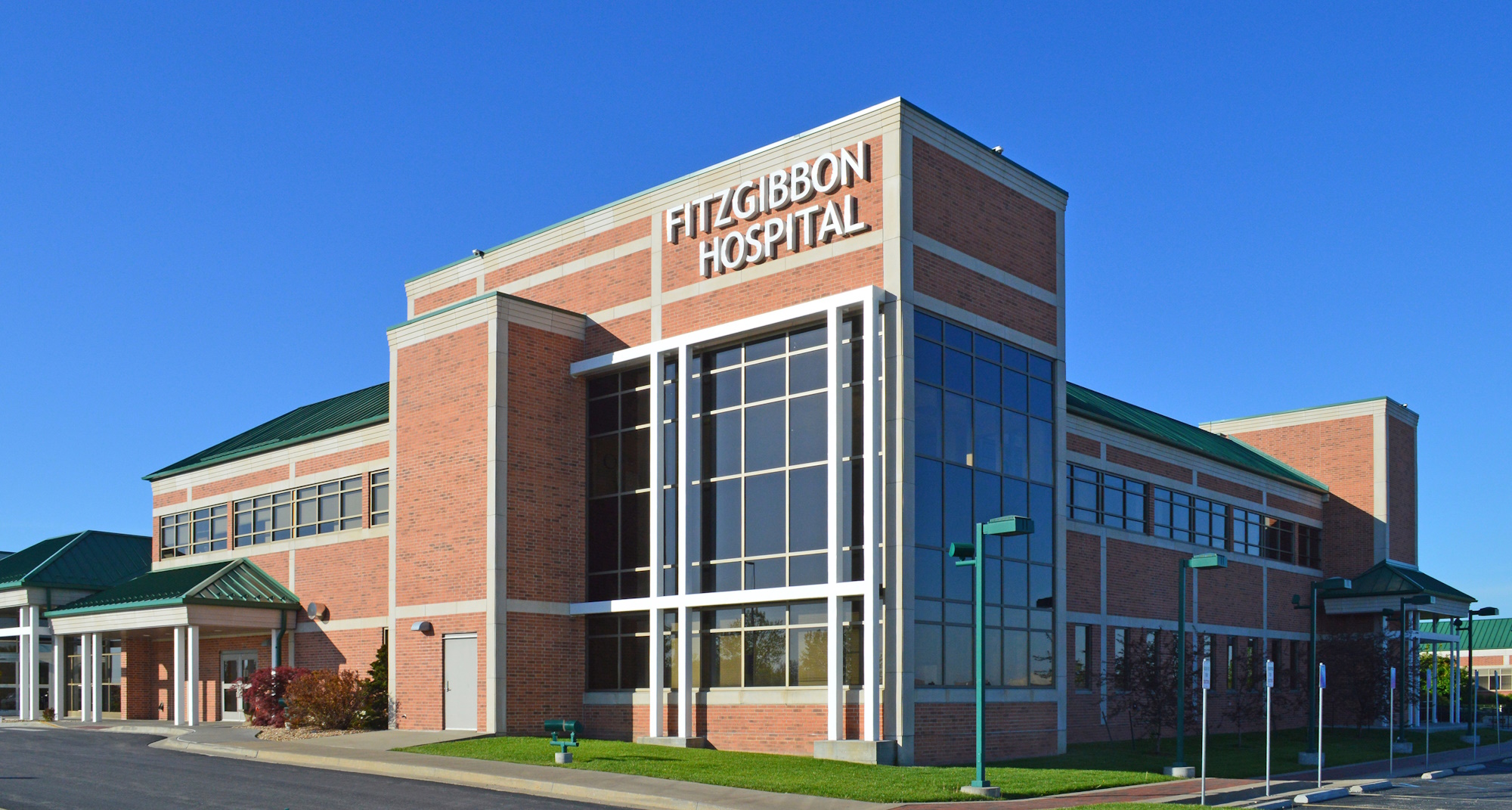
at a recent event.
Willow’s Breath is a Special Gift
Imagine your child, asleep in her bed, and then suddenly unable to breath.
There are few things that scare a parent more than the thought of their child facing an immediate, critical illness. But that was the reality for Whitney Thompson three years ago. Thompson’s daughter, Willow, was just 1 ½ years old when she faced such an illness in the early morning hours of February 10, 2016.
“Willow had been coughing, and I got up to check on her about 5 a.m.,” said Whitney, who lives in Marshall. “That is when I found her. I began screaming, and my son Chase, who was 7 years old at the time, had to call 911.”
Willow’s dad began CPR while on the phone with the Saline County E-911 center, as they tried to get Willow to breathe. Thompson says first responders got there very quickly, and firefighters and law enforcement took over. The ambulance arrived, and they worked for some time to get an IV started because Willow’s veins were so small. But the dose of adrenaline that morning was only the beginning of what would be a long medical journey for the Thompson family.
When Darin Haug, D.O., President and CEO of Fitzgibbon Hospital, arrived to work that day, he took note of the number of cars in the parking lot as well as the ambulance in the bay and the number of people in the Emergency Department.
“I wasn’t scheduled for the ER that day, but when I arrived at the hospital, I saw several people outside of the ED, more cars than usual, and an ambulance outside in the bay. While this wouldn’t be completely unusual, I had a strange feeling inside me about what was going on,” said Haug. “I felt that I needed to check and see if there was a need for any assistance.”
Dr. Haug’s previous training while working at Children’s Mercy Hospital in Kansas City prepared him for the emotionally charged situation awaiting in the Fitzgibbon Hospital Emergency Department.
“I went into the ER and didn’t know anything of the situation. But I did see a little child in the trauma bay in very critical condition. At that point, instinct just takes over,” said Haug. “It was the instinct of, “Ok, what’s the situation and what do I need to do to help take care of this little person?’ There are levels of a patient’s condition - from urgent to emergent and then critical. She was definitely a little baby girl in critical condition.”
The staff in the Fitzgibbon Emergency Department was fully engaged in Willow’s care. While providing treatment, they we also trying to figure out what was causing her to be so sick. The Fitzgibbon staff worked to stabilize Willow so she could be transferred by helicopter to Women’s and Children’s Hospital in Columbia. Willow spent the next two and a half weeks there, much of which was in the Pediatric Intensive Care Unit (PICU).
Diagnostic imaging showed that her lung had collapsed. They used endoscopy as a means of identifying why her lung collapsed and why it was such a critical situation for Willow. They were then able to discover the cause. As it turns out, Willow had eaten lunch at her preschool just about three days before. She aspirated – or inhaled – a kernel of corn into her lung, which caused a powerful lung infection. The infection, in turn, caused her lung to collapse on itself.
“When Willow was in PICU for so long, the staff said that the number one organic material that children aspirate is corn. I was kind of shocked by that, because I thought it would be grapes or hot dogs,” said Thompson.
While Willow began to recover, the emotional toll of that difficult morning was significant for all involved.
“This was absolutely the worst time of my life. Seeing your little girl there with the doctors doing everything that they could for her. I was trying to be there for Willow and also be there for my son, Chase. It was a very traumatic time for all of us,” said Thompson.
Dr. Haug echoed the emotion of the morning as he remembered what took place.
“From my perspective, when there is a little child in front of me that I am caring for, it is natural instinct to shut the emotion off,” said Haug. “But at the same time, there are little time periods where I think about this being one of my own children in that situation. When I see the parents, I have glimpses of seeing my wife and me in this situation. These are fleeting thoughts, but I believe they drive me more intensely in the care I provide for the life of that little person in front of me.
“I can still see her vividly to this day, and I fully believe that it was with God’s blessings that I could help care for her,” said Haug.
Thompson credits God for all of the little miracles that occurred through this ordeal, but she is also quick to thank all of the healthcare professionals who worked tirelessly to make sure Willow’s story came to a happy conclusion. Many of these workers still keep in contact with the Thompsons, as Willow celebrates milestones in her life.
“As I have experienced over the years, it is so rewarding to see those little kiddos that I have cared for running around, smiling, laughing, and doing just what kiddos should be doing. Seeing sweet little Willow’s smile, running and playing, and doing so well is a very special feeling,” said Dr. Haug.
“Yeah, I just had corn for the first time last week. I love sweet corn now, and I am not coughing,” said Willow.
“I am a huge advocate for Fitzgibbon Hospital. Willow is definitely a miracle, and I thank Fitzgibbon Hospital and Dr. Haug for stabilizing her enough that she could be transferred to Women’s and Children’s Hospital,” said Thompson. “If it were not for Fitzgibbon Hospital, Willow would not be here.”



.png)